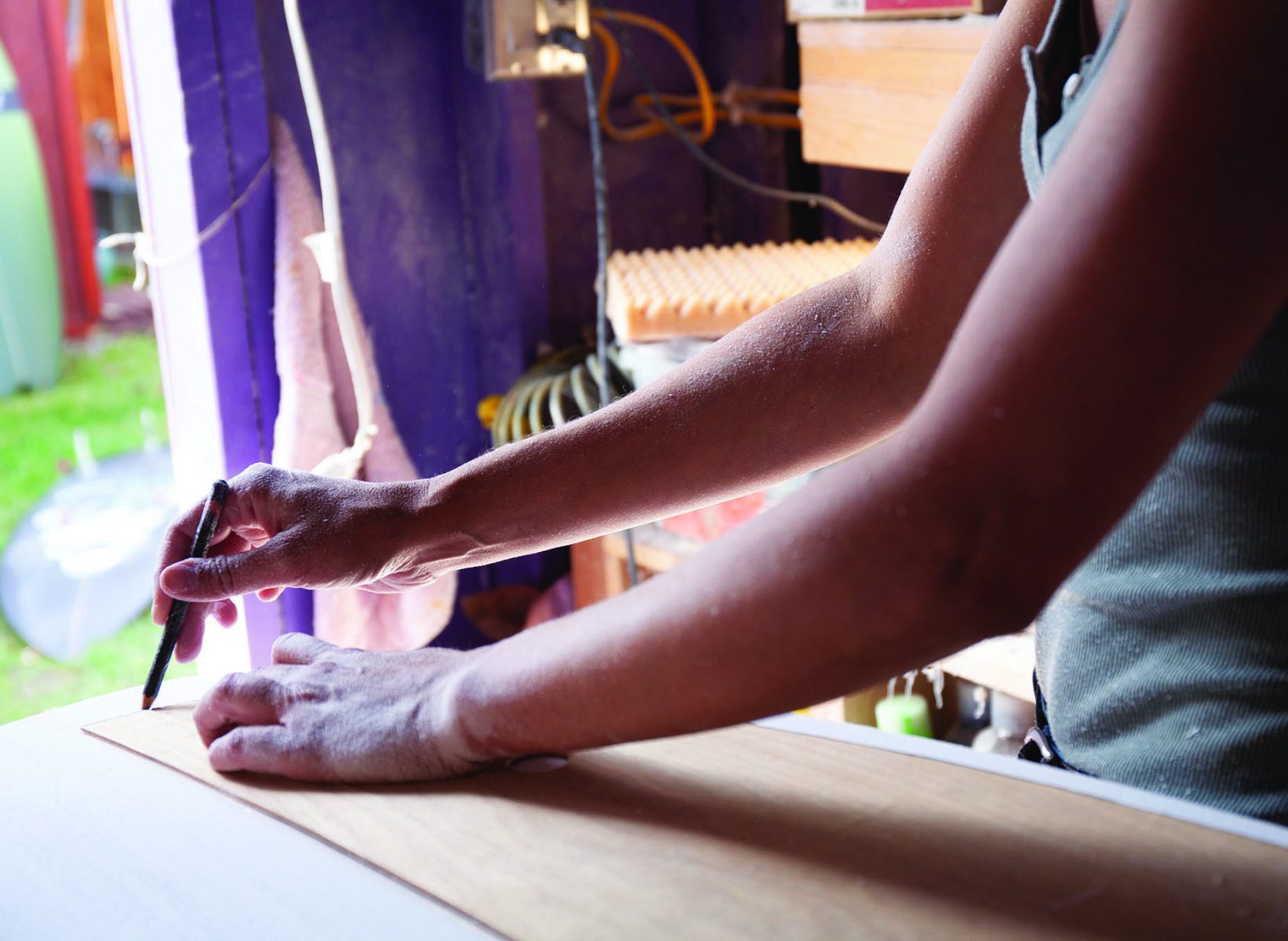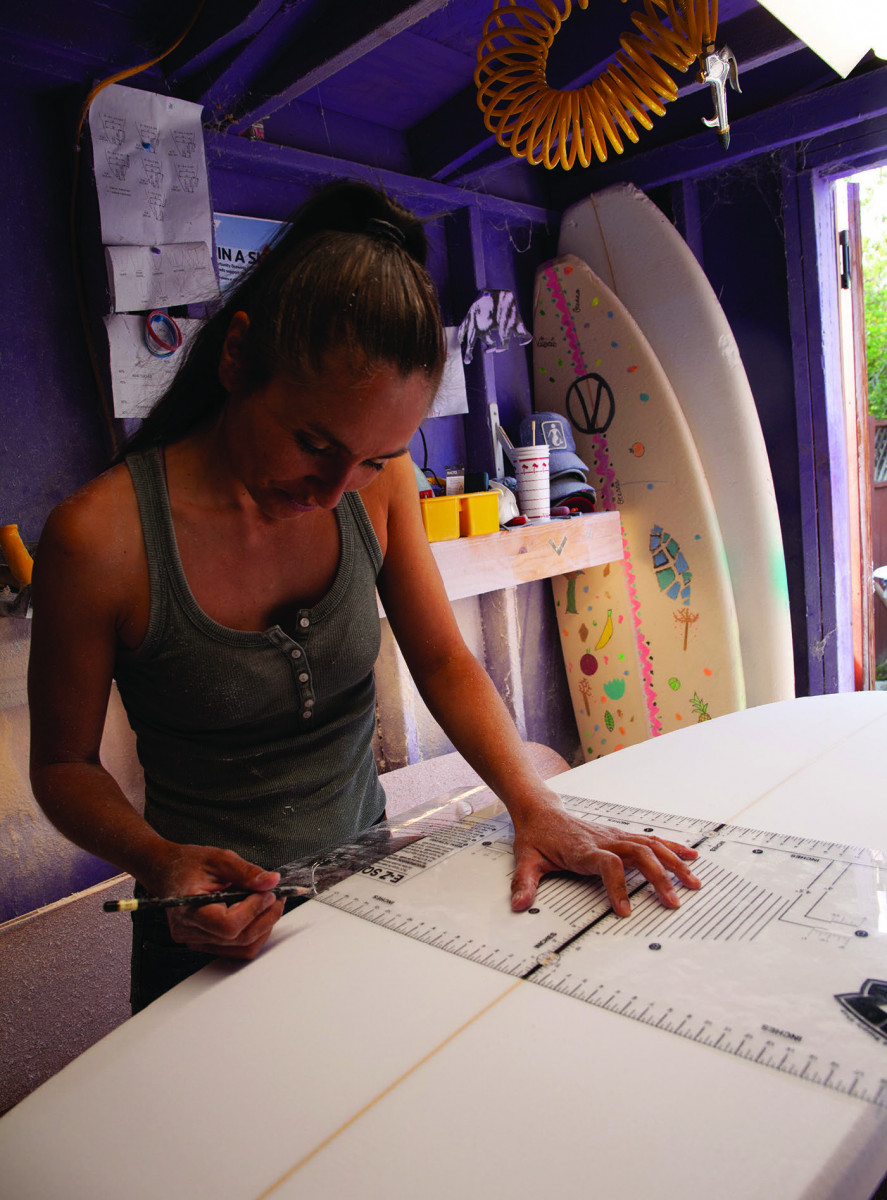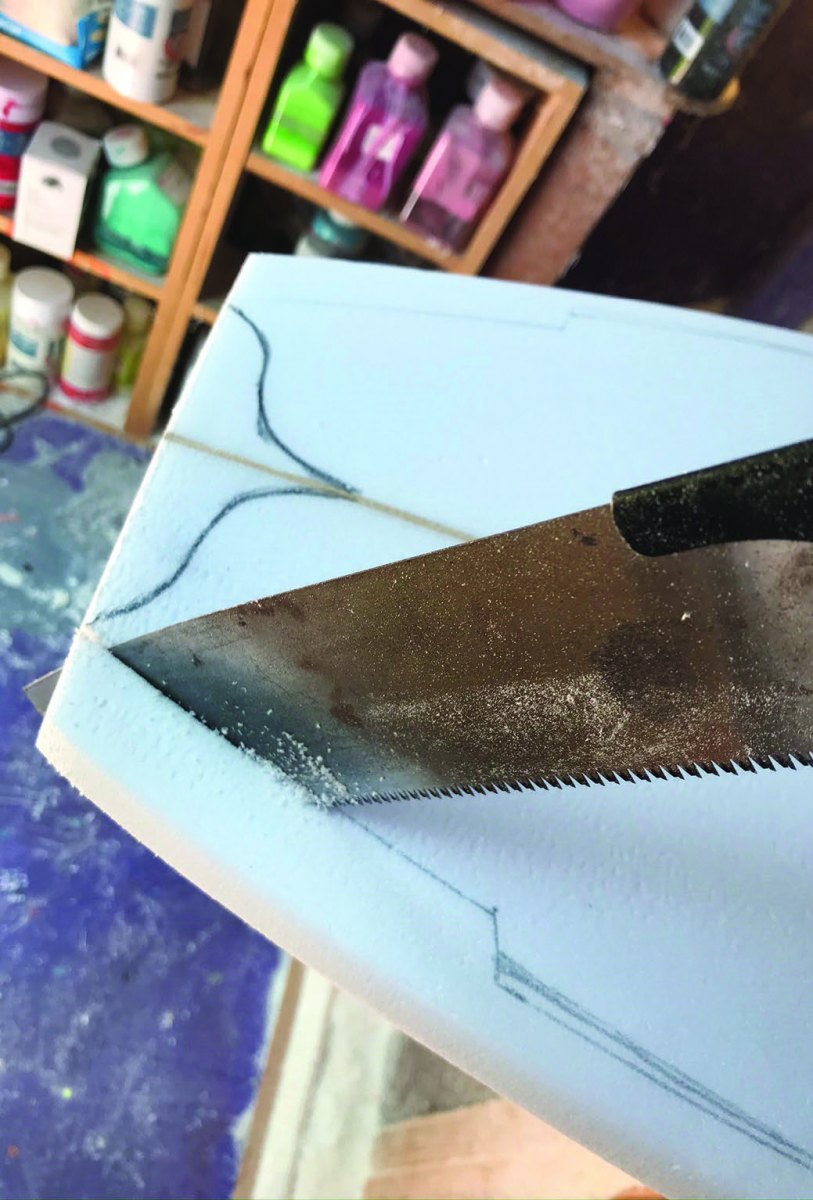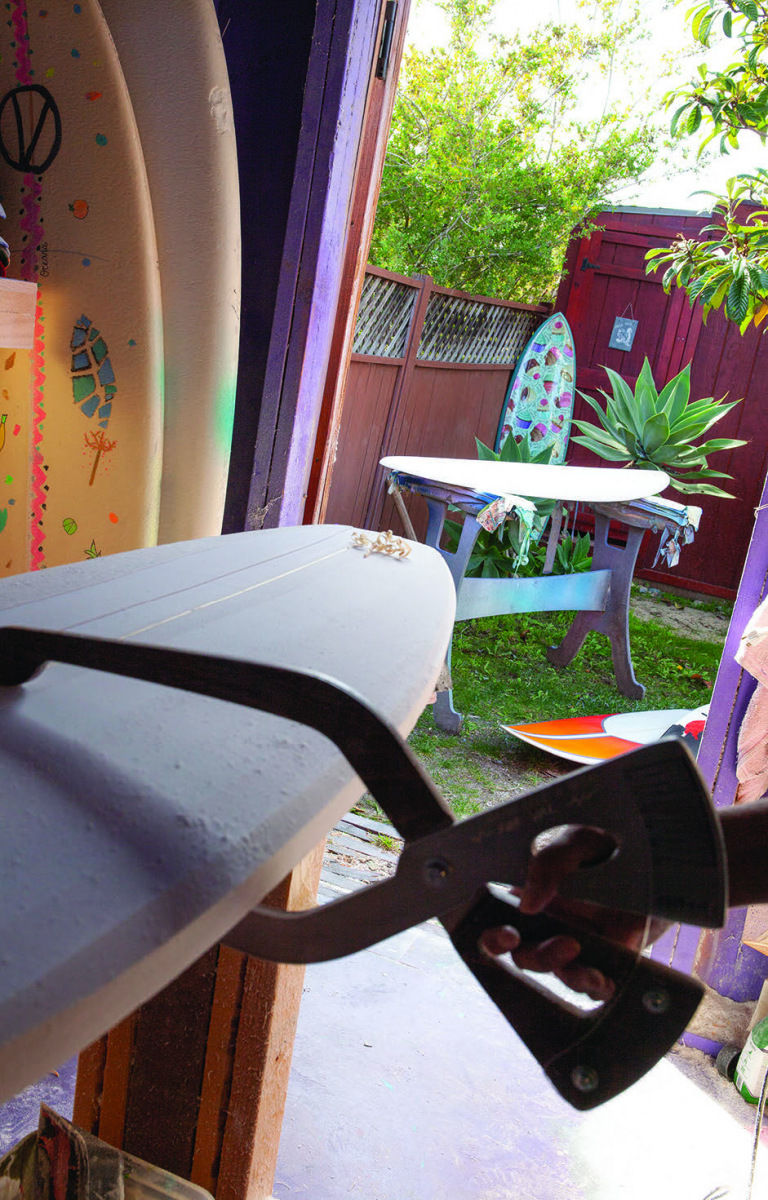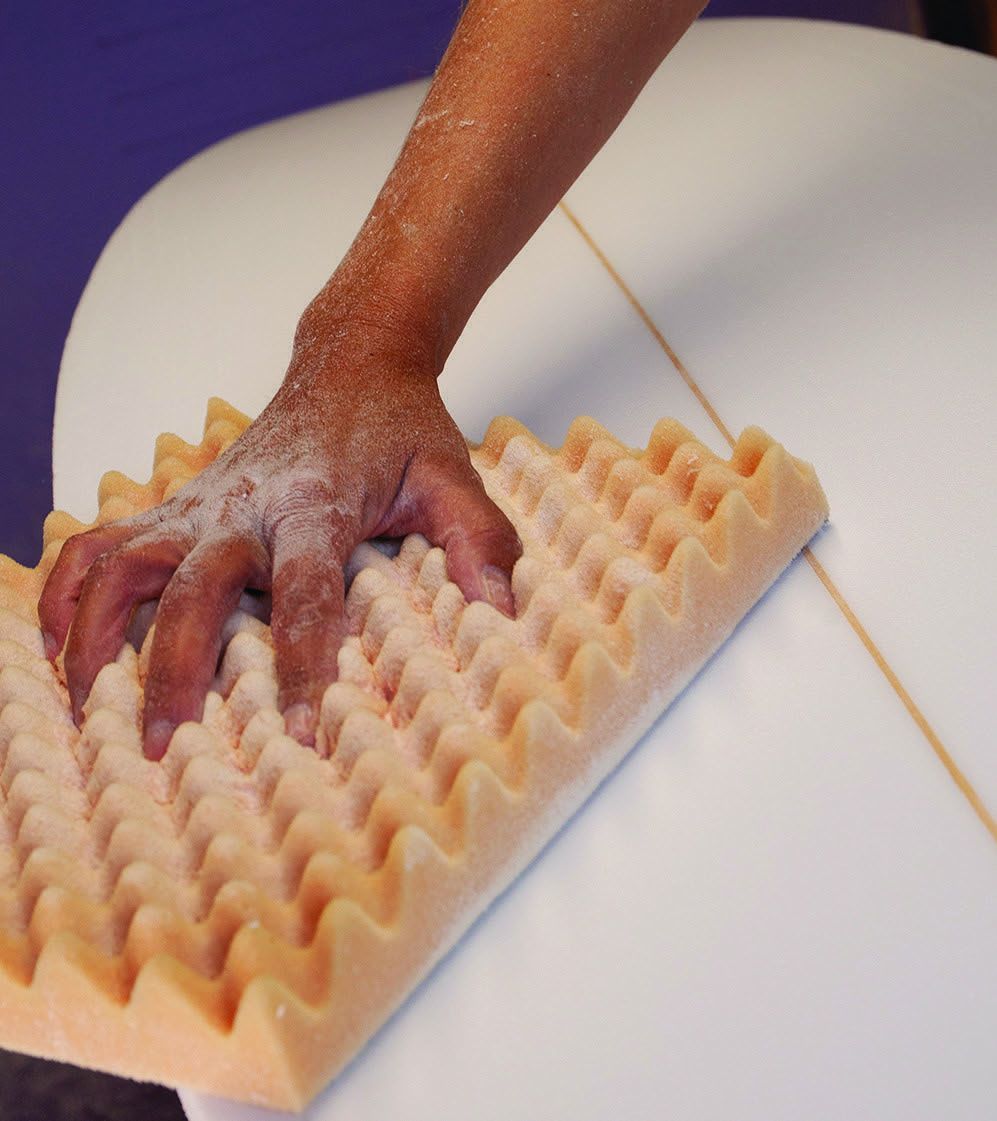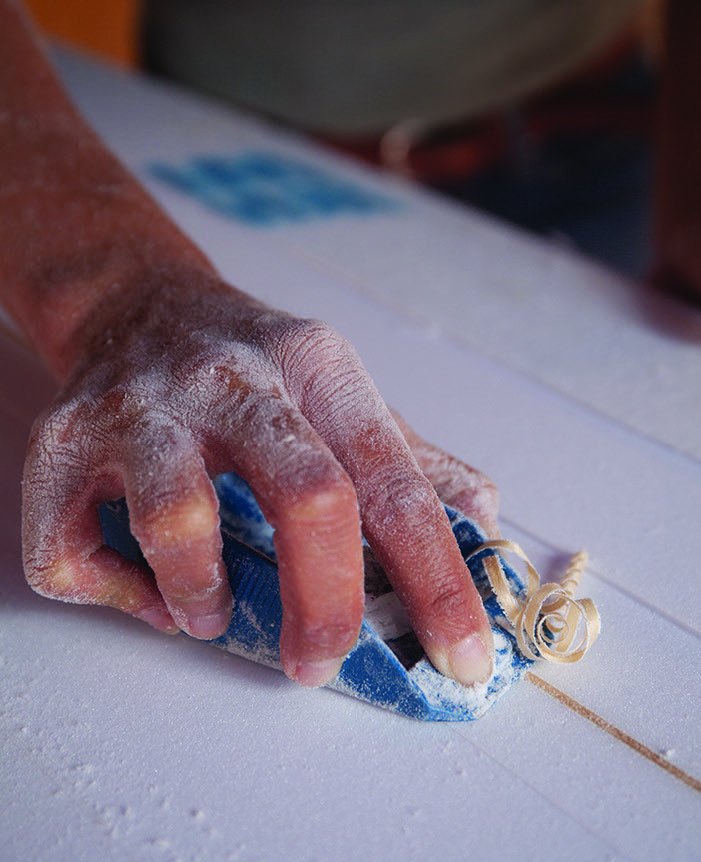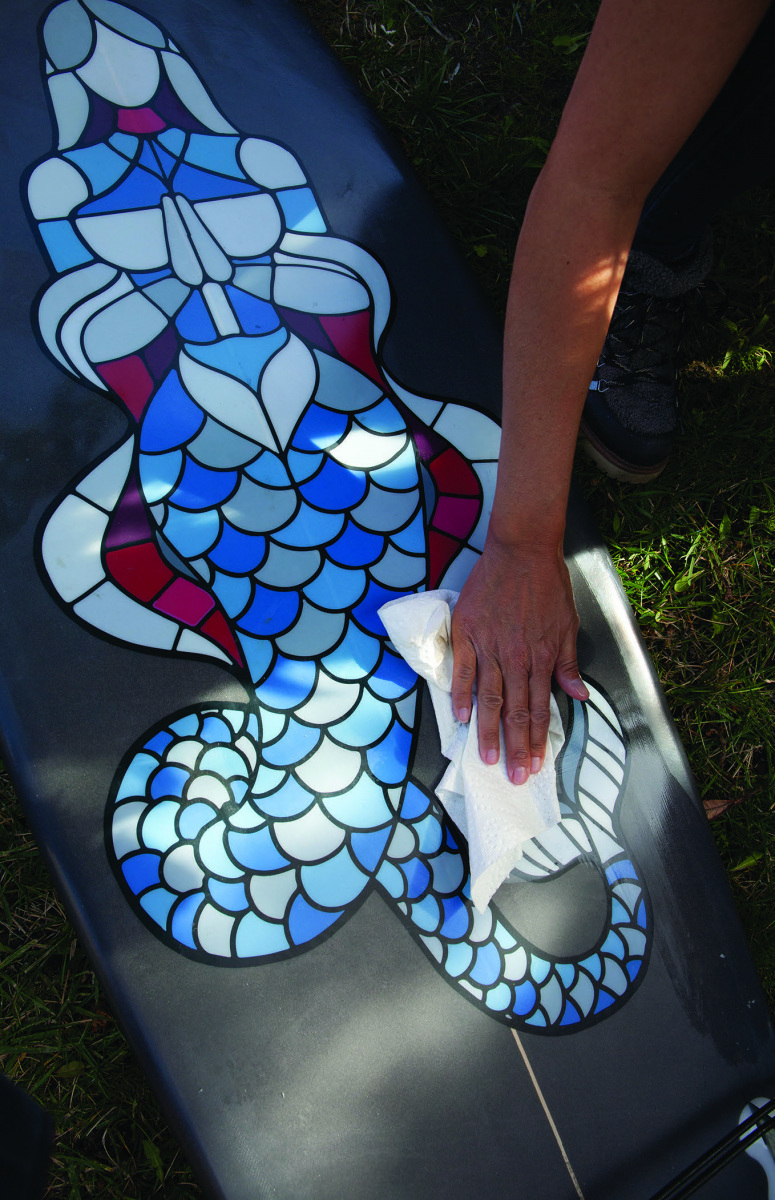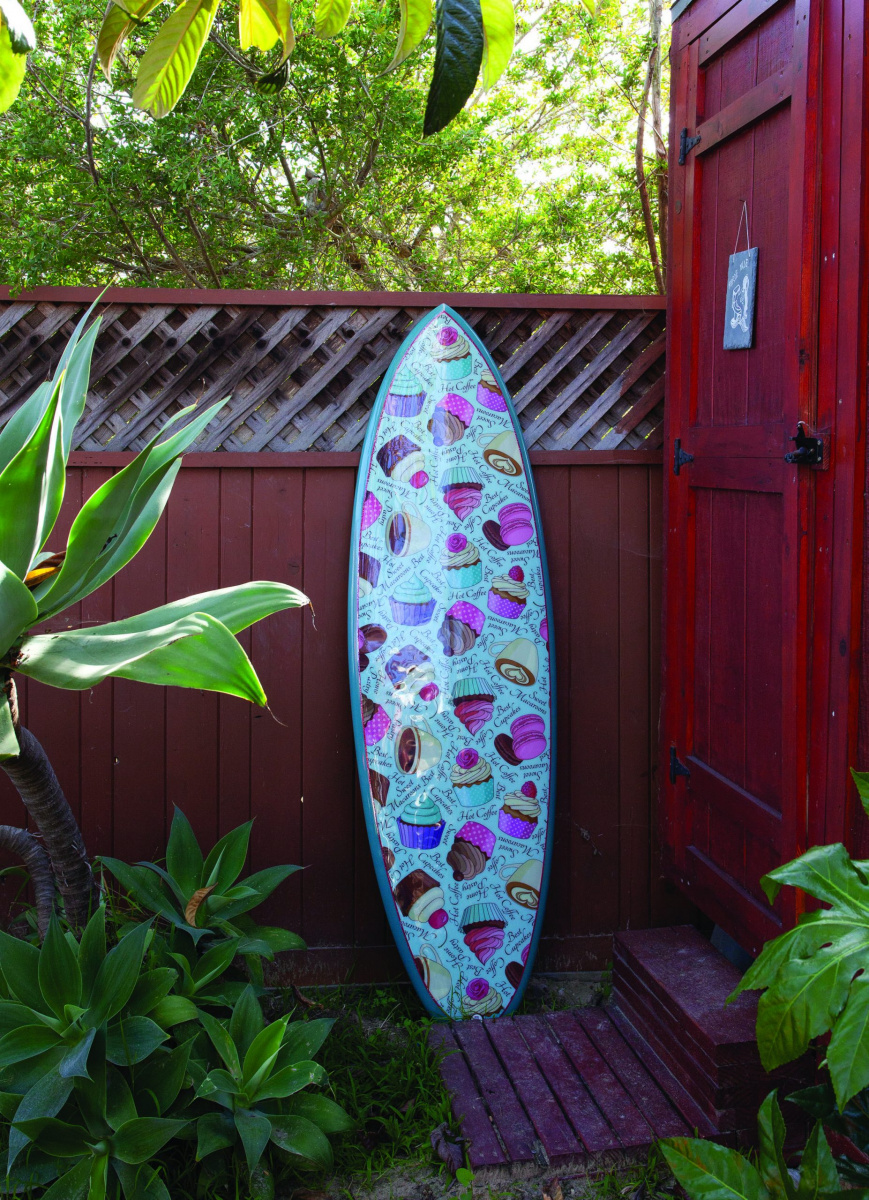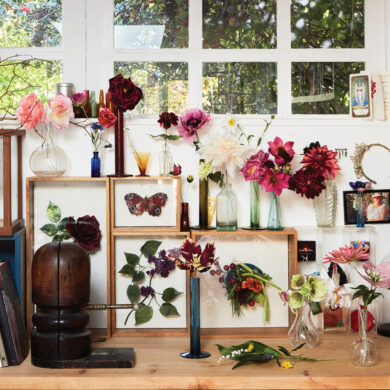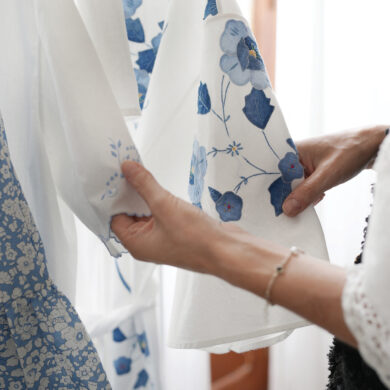My name is Valerie Duprat. Disclaimer: None of the paths I followed so far were anticipated or voluntary, like becoming a surfboard shaper. I grew up in the city in France, far away from the Ocean, and thought my dream was to live on a snowy mountain. Well, I moved to South California, became an American citizen, a surfer, and created my own surfboard brand! That is what I call “my American Dream!”
It all started with my PhD in Biochemistry, which led to a post-doctoral fellowship at the University of California, which led to a scientist position at a biotech company called Illumina, the world leader of DNA sequencing. Scientist is a very stressful cerebral job and I needed to find an artsy activity to relax and use the other side of my brain.
Since I was addicted to surfing, I naturally started by painting custom artworks on a couple of old beat-up boards. But Santa had a different agenda for me: that very Christmas, a 6 feet tall object was sitting under the tree. It was a piece of foam with a wood spine, which vaguely looked like a surfboard. It came with a couple of tools from the local store and a DVD called “Surfboard Shaping 101.” It was a clear invitation to the path I gladly followed.
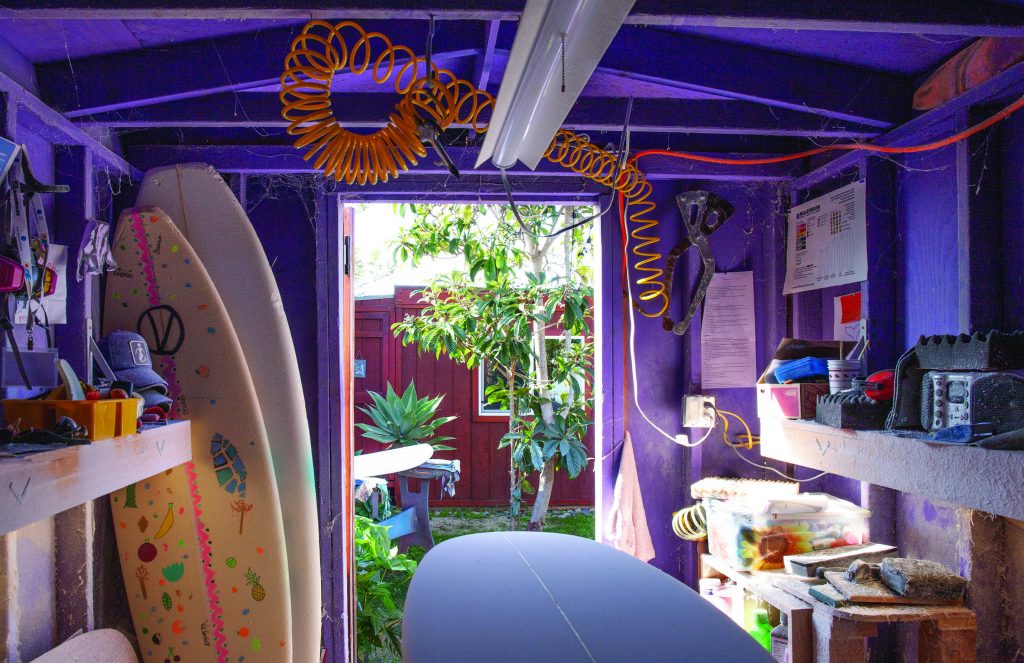
After watching the tutorial video, a hundred times, I “shaped” my first board. It took me 6 months and a lot of Google searches. The board came out ugly in retrospect but of course at the time, I felt proud and thought it was perfect!
Despite a very biased judgment of my creation, there was one thing I was sure of: I was definitely hooked to that craft I just experienced, and I could not wait to start my second surfboard. It is then I started to realize I had just naively stepped into a very closed circle of craftsmanship, and when I say “man” I mean it literally: surfboard shaping still is a sacred craft secretly passed from generation to generation of men. At the time I started shaping, only a handful of women around the globe had been recognized as shapers, including the pioneer, Cher Pendarvis.
I learnt the hard way and sometimes very rudely that this craft was not openly shared, and secrets were kept within the shaping rooms. I was even told to give up my new passion, but that only fueled my drive to succeed. I decided to continue “my hobby” by shaping for myself and my family. Then, surfer friends trusted me with their next boards and by mouth to ear, I started to shape for strangers that either heard of me or had seen my (very colorful and noticeable) boards in the local line-ups. Surely people started to take me more seriously as I was creating board after board, and for that reason combined with the fact I was a woman, some famous shaping bays’ doors opened up.
I got the opportunity to train with very recognized master shapers, like Matt Kinoshita from Maui, who invested some of their precious time on making me become a better shaper. Yes, I said it. At one point, shaping became an actual new title on my resume and my hobby turned into a true business, especially with the explosion of Instagram, which gave my work worldwide exposure. Today, I am still the same scientist during the day who transforms into a mad shaper at night. Orders are coming in, but I always make sure to focus all my attention on one board at a time because creativity should not be rushed. All my boards are 100% guaranteed “made from the heart.”
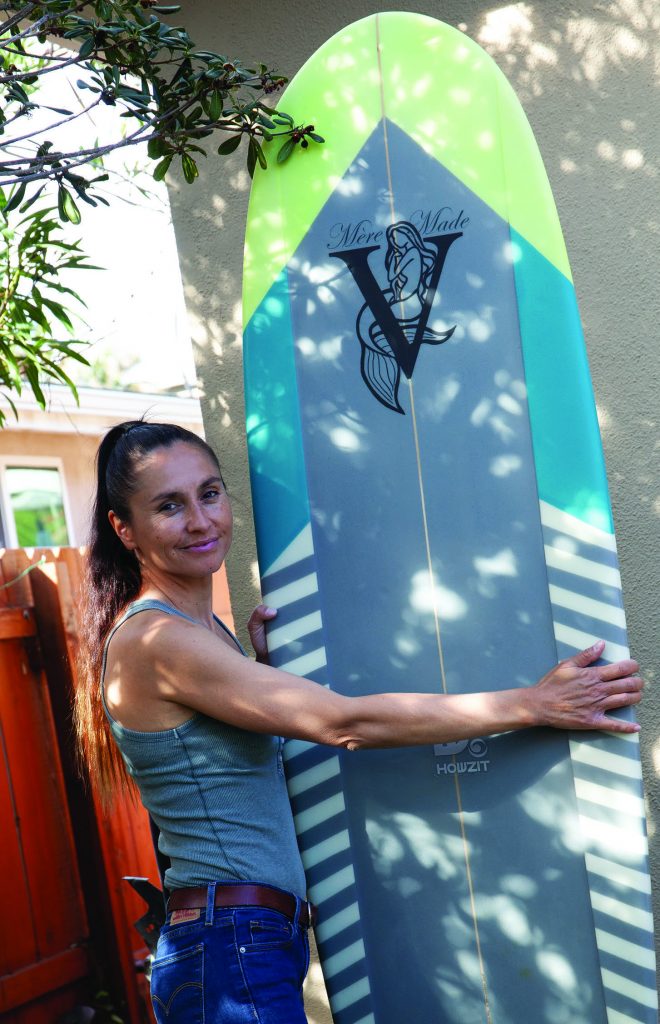
The process of shaping surfboards is sequential and meticulous but yet there are a hundred ways to do it. Like any craft, every single shaper has their own techniques, secrets and style which, of course, all evolve with time and expertise. But in brief, surfboard shaping can be divided into the following categories:
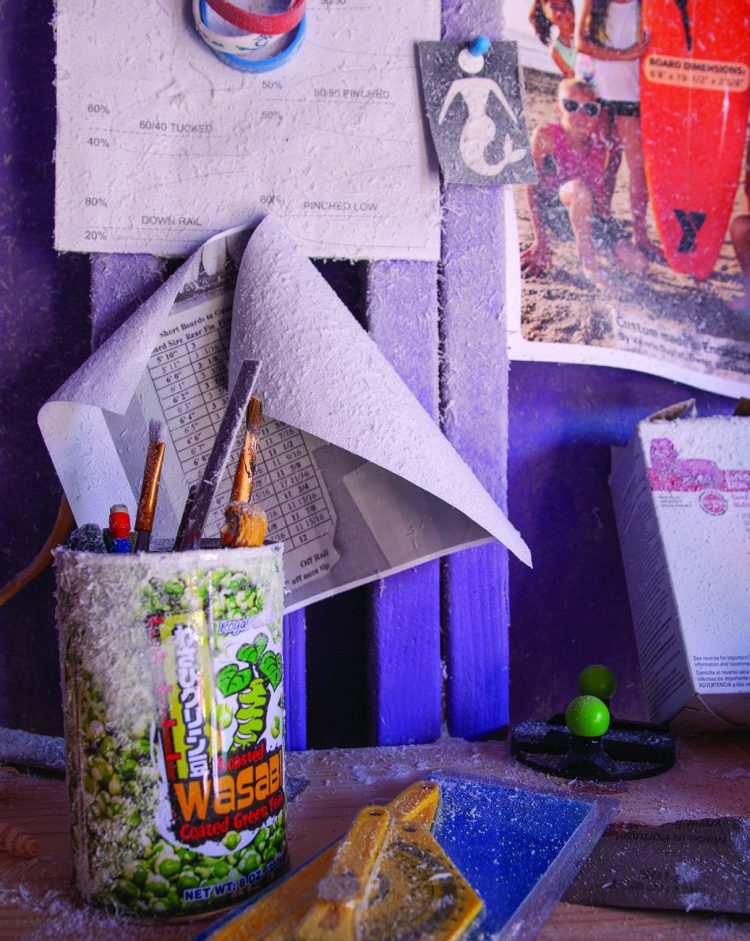 1. Mental conceptualization of the board adapted to the surfer’s wishes.
1. Mental conceptualization of the board adapted to the surfer’s wishes.
It sounds trivial but this is probably the most important decisional part of the process! A bit of thinking ahead makes the end-result as close as possible to what the rider needs. Custom surfboard making requires a lot of discussion with the recipient of the board. I really like that collaborative pre-shape work. Every time, I feel I am doing a fun project with my customers.
2. Outline drawing on the blank piece of foam that has the overall shape of a surfboard, using wood templates with specific curves.
A lot of measurements are taken during this step to make sure the board is symmetrical but also at every single step of the process.
3. Finally, the drawn outline is cut out with a saw.
Every single step has to be right for the next step to be properly achieved. It is a very sequential craft and expertise comes from knowing the consequence of every act. Mistakes are usually not rescuable unless starting from scratch again. Pressure at every step makes the process always intense, never boring.
4. 3D sculpting with electric planer.
This process removes the unwanted foam to get closer to the final shape. It is loud and it is dusty but the feeling of cutting into foam like it is butter, is thrilling. It’s dangerous too as the blades of the planer can cut deeply into flesh (I know by experience). Again, measurements are key and now that thickness is worked on. I use a special caliper with long arms to reach the middle of the board. Tools like this make the craft feel ancient and “sacred.”
5. Manual sculpting with SURFORM plane to get even more precise and come even closer to the final shape.
This shows SURFORM plane used to sculpt the rails of the board (edges are very important in the way the board reacts on the wave).
6. Fine sanding using sandpaper to remove edges and make the foam totally smooth and ready for glassing.
The texture of the sanded foam is so smooth. I love to “caress” the board (it is also part of the quality control, to make sure the board is perfect. Shapers work with their eyes but equally “see with their hands.”
Ta-Da! The shaping part is done!
7. Optional spray painting
Adding artwork by spraying the foam with acrylic paint, using a masking tape technique to create artwork
8. Next is the glassing.
This is adding resin and fiber glass to make the board waterproof but that is a different art which I delegate to professionals.
What’s next? The most frequent question I have been asked is, “Don’t you want to become a full-time shaper?” Never! The secret recipe of my business is that it isn’t one. Keeping my shaping activity free of any financial pressure is key to my own happiness and it shows on the final products. But more than the success of my surfboard brand, what I have been the proudest of is that, according to the messages I receive regularly, my story inspires women (or men) who realize it is possible to go against the odds and chose a totally unexpected creative path, with hard work and determination. If I can do it, anybody can do it, too!

